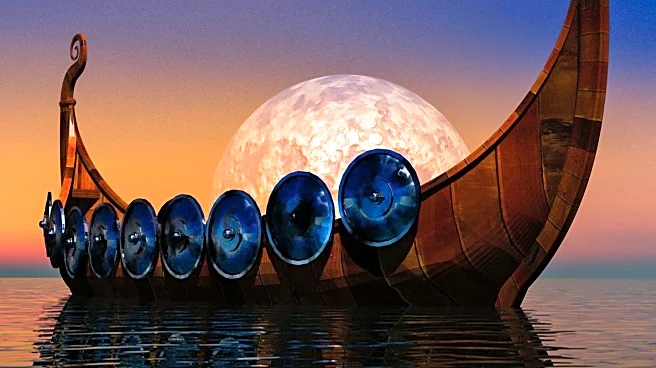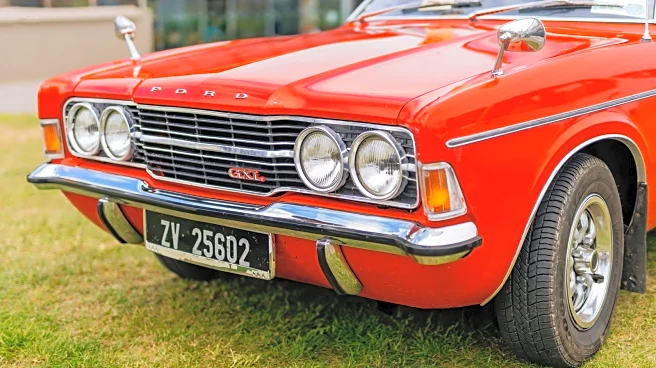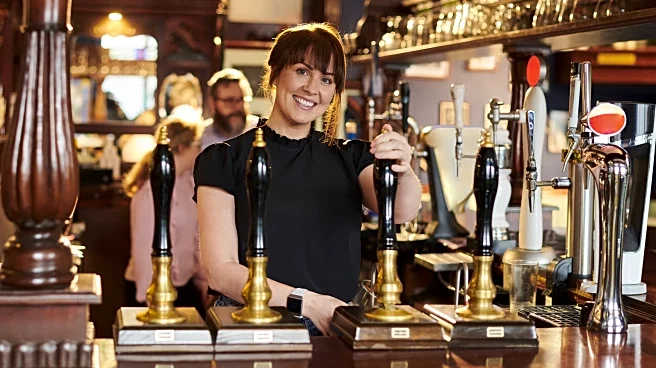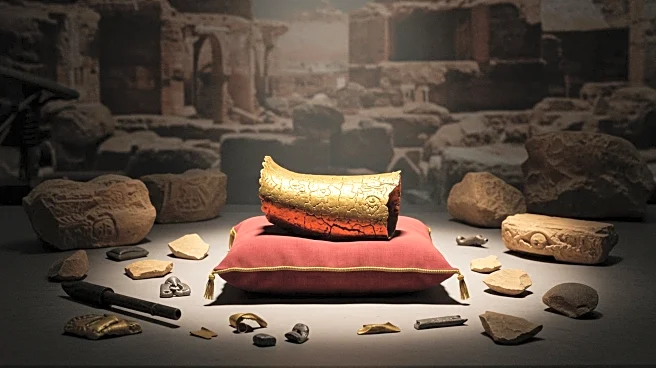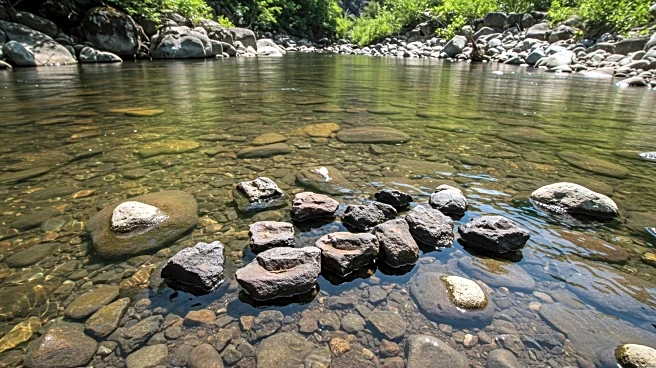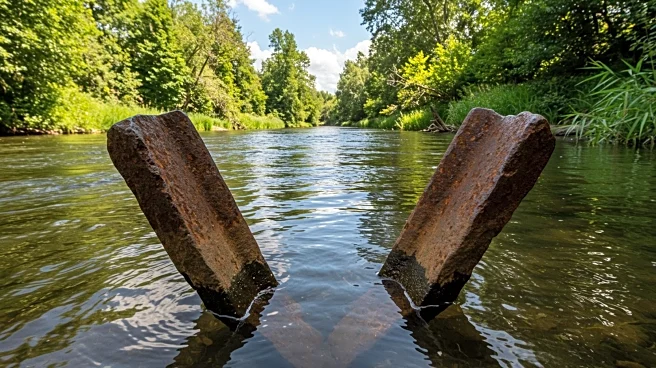Rapid Read • 8 min read
A recent geochemical analysis of the Bedale hoard, discovered in North Yorkshire, England, has provided new insights into Viking trade networks, suggesting earlier connections with the Islamic world than previously understood. The hoard, dated to the late 9th or early 10th century, includes 29 silver ingots, arm rings, and neck rings. Jane Kershaw, a Viking Age specialist at Oxford University, conducted lead isotope analysis on the silver artifacts, revealing that nearly a third of the hoard's silver originated from the Islamic Caliphate. This challenges the established chronology of Viking silver acquisition, indicating that significant quantities of Islamic silver were reaching Viking territories in the 9th century. The analysis also showed that some silver items were refined using lead from British mines, suggesting advanced metalworking practices existed earlier than known.
AD
The findings from the Bedale hoard analysis have significant implications for understanding Viking trade and economic history. The evidence of early trade links with the Islamic world highlights the Vikings' role in long-distance trade networks, which contributed to their wealth and expansion. This challenges the traditional narrative that Vikings primarily acquired silver through raids, emphasizing their engagement in trade. The discovery of sophisticated metalworking practices in Britain also suggests a higher level of technological advancement during the Viking Age. These insights could reshape historical perspectives on Viking interactions with other cultures and their economic strategies.
Further research and analysis of other Viking hoards could provide additional evidence to support the revised timeline of Viking trade with the Islamic world. Historians and archaeologists may explore other artifacts to understand the extent and impact of these trade networks. The findings could lead to a reevaluation of Viking economic history and their influence on European trade routes. Additionally, the study may prompt new investigations into the technological capabilities of Viking and early medieval societies.
The revelation of early Viking trade with the Islamic world raises questions about cultural exchanges and influences between these regions. It suggests a more interconnected medieval world, where goods, ideas, and technologies were shared across vast distances. This could lead to a deeper understanding of the cultural and economic impacts of Viking expansion on Europe and the Islamic Caliphate. The study also highlights the importance of interdisciplinary approaches, combining archaeology and geochemistry, in uncovering historical truths.
AD
More Stories You Might Enjoy
